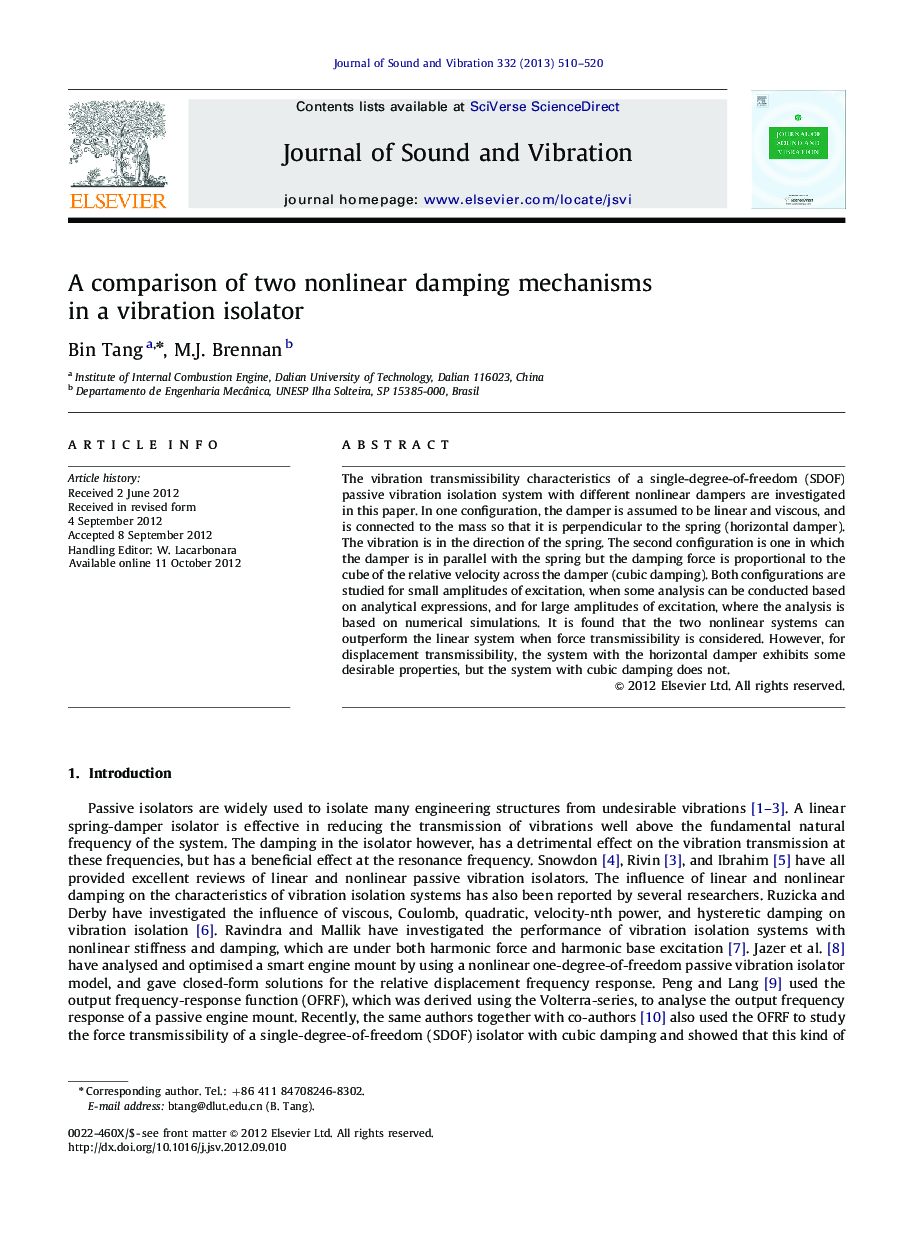| Article ID | Journal | Published Year | Pages | File Type |
|---|---|---|---|---|
| 288412 | Journal of Sound and Vibration | 2013 | 11 Pages |
The vibration transmissibility characteristics of a single-degree-of-freedom (SDOF) passive vibration isolation system with different nonlinear dampers are investigated in this paper. In one configuration, the damper is assumed to be linear and viscous, and is connected to the mass so that it is perpendicular to the spring (horizontal damper). The vibration is in the direction of the spring. The second configuration is one in which the damper is in parallel with the spring but the damping force is proportional to the cube of the relative velocity across the damper (cubic damping). Both configurations are studied for small amplitudes of excitation, when some analysis can be conducted based on analytical expressions, and for large amplitudes of excitation, where the analysis is based on numerical simulations. It is found that the two nonlinear systems can outperform the linear system when force transmissibility is considered. However, for displacement transmissibility, the system with the horizontal damper exhibits some desirable properties, but the system with cubic damping does not.
► The influence of two nonlinear dampers on vibration transmissibility are compared. ► An isolator with geometric nonlinear damping force is studied. ► Analytical expressions and numerical simulations are used for the analysis. ► An isolation system with geometrically nonlinear damping has some advantages compared to a linear damper.
